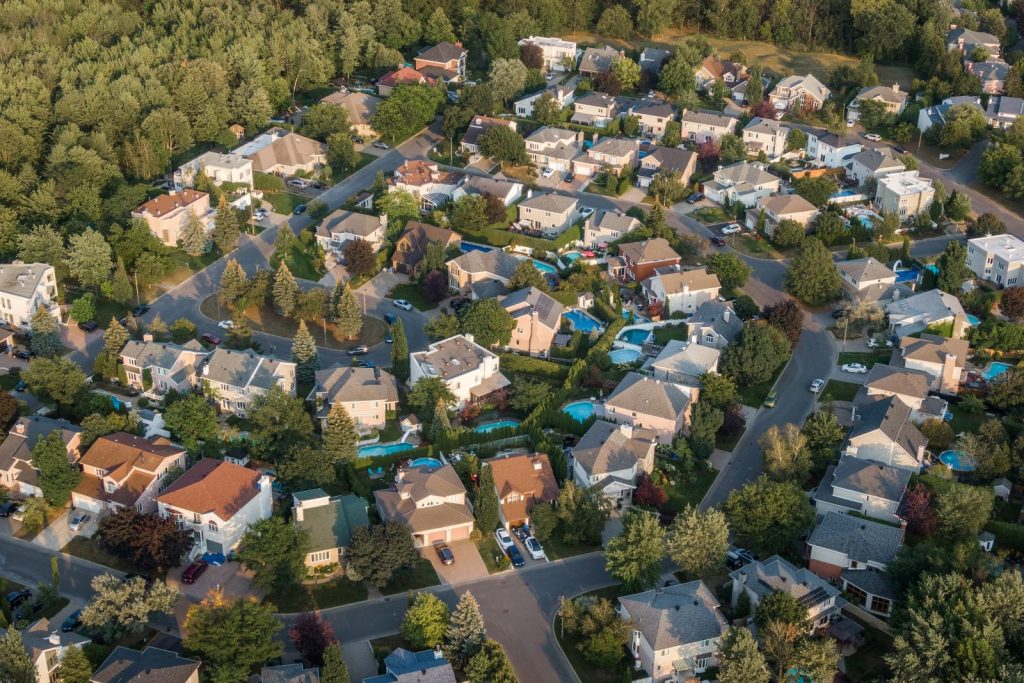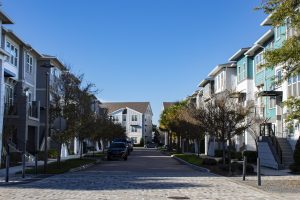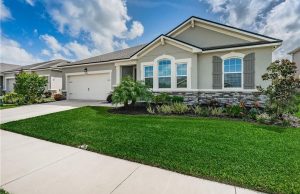
Historically, homes were designed to fulfill the needs of large families. In many instances, they were places for multi-generational families to thrive and allowed for aging in place. As modern society evolved, the idea of home ownership changed into a single-family, suburban model. The post-World War II shift into growing the population and infrastructure was ideal for the single-family design. Today, the same generation, also the largest in population, is leading the way in the market demand to “age in place” and return to independent multi-generational living.
Lifestyle Demands of the 55+ Population
According to the World Health Organization, “The population aged 60 years and over will increase from 1 billion in 2020 to 1.4 billion, and by 2050, the world’s population of people aged 60 years and older will double to 2.1 billion.” The projections are due to an increased life expectancy and the aging of the “boomer” generation. As life expectancy increases, the demand to “age in place” and maintain independence for as long as possible has become more popular.
A contributing factor to an increased life expectancy and independence is the awareness of the health benefits of an active lifestyle. About 77% of seniors want to remain in their homes as they age. Their desire to be independent and live actively drives many of the current planning and design approaches in the market. Monta Consulting & Design uses these lifestyle demands to influence design today but is also looking ahead to what design trends will become commonplace, as detailed below.
Aging in Place Explained
Aging in place is staying in your home as you get older with the ability to live safely and independently in a community, regardless of age, income, or ability level. Alternatives to aging in place are moving to an institutional facility such as an assisted living facility or relocating to live with family.
The desire to age in place is often motivated by people’s sense of familiarity and attachment to their homes, communities, and independence. In terms of design, aging in place allows the residents to thrive as they get older through forward-thinking approaches to accessibility and proper space planning.
The trend of aging in place started becoming popular in the 1980s. According to the National Library of Medicine, it grew more mainstream into the 2000s. Some factors that contribute to the aging-in-place trend are:
- Socioeconomic status
- Age
- Housing ownership and satisfaction
- Physical and psychological health
Aging in place is the preferred way to age. In the U.S., only 4% of seniors live in nursing homes and 2% in an assisted living facility, while the rest of the assisted living population over 85 use home care services.
Advantages of Aging in Place
Aging in place promotes fulfillment, a positive quality of life, and self-esteem. When aging in place is supported, the entire community can benefit because older adults volunteer more, remain active, and share wisdom and life experiences with others. There are many benefits to aging in place, such as:
- Fostering independence and empowerment.
- Older adults remain socially engaged in their communities.
- Affordability.
- Increased cognitive function.
- More comfortable.
- Healthier and more active lifestyle.
- Closer proximity to friends and community.
Aging in place allows older adults to maintain a high level of control over their lives, which helps to improve their quality of life. This trend can also bring some advantages to the market and positively impact the local economy.

Disadvantages of Aging in Place
Aging in place, unfortunately, brings its fair share of challenges. Managing a home can be dangerous and difficult for an older adult. Many of the disadvantages below are due to limitations of financial resources, mobility, and cognitive function.
- Unaddressed maintenance of the home.
- Decreased housekeeping standards.
- Increased risk of physical injury.
- Increased stress if the home isn’t kept.
- Unnoticed or unacknowledged health issues.
- Increase risk of being victimized by scams.
- Isolation & Depression if they live alone.
- Renovation costs to age in place.
Aging in place can have disadvantages; however, it truly depends on factors like physical health and socioeconomic status, as mentioned previously.
Impact on the Market
Real Estate Impacts
Aging in place has created significant market ramifications by increasing demand for housing. With the majority of the 55+ community choosing to age in place and not leave their homes after decades, those in their 30’s eager to buy their first home are forced to wait longer and pay more than expected. There is much attention on millennials buying fewer homes than the younger generation in previous eras. According to Freddie Mac, “it was estimated that 3.4 million millennials are missing out on home ownership.”
On the other hand, we are seeing that seniors born after 1931 stay in their homes longer, resulting in higher homeownership rates compared to previous aging groups. In total, aging in place has accounted for about 1.6 million houses held back from the market through 2018, as estimated by Freddie Mac. This demand for homeownership from seniors will raise the relative price of owning against renting, making renting more appealing to younger generations. The number of homes seniors retain is likely to grow as the number of seniors increases and the barriers to stay in place are lowered. This highlights the significance of addressing obstacles to producing new housing supply to accommodate long-term housing demand.
Design Impacts
Remodels
According to the American Society of Aging, “There are 100 million homes in the United States. Because the housing industry only builds about 1 million new homes in a good year, there is not enough time to build new housing for all aging Americans.” Therefore, remodeling existing homes becomes desirable for those wanting to age in place. On average, a homeowner can spend $5,000 to $25,000 to remodel their home for aging in place. Many of the things that need to be updated include:
- Walk-in or roll-in shower with safety grab bars.
- Create a safer entryway by adding ramps and a wider doorway.
- Install intelligent doorbells and cameras.
- Widen interior doors and hallways.
- Add brighter lighting.
- Replace door handles and faucets with a lever style.
- Install grab bars and handrails throughout the home.
- Voice control technology
- Install lifts in two-story homes.
- Adjustment of cabinet heights for wheelchair accessibility.
These design changes can significantly make the home safer, increase accessibility, and reduce the risk of falls. Aging-in-place renovations also increase the home’s value and make it more desirable in the market.

New Construction
Aging in place has different effects on new construction design depending on location. In more rural or suburban areas, it is easier to build new structures. New construction or additions are a viable option when older adults want to stay in their homes. A form of new construction considered by older adults who decide to relocate to a smaller unit as an option to age in place is an accessory dwelling unit (ADU). An ADU is a smaller, separate housing unit that shares property with the primary dwelling unit.
According to the poll taken by AARP, “60% of adults say they would consider living in an ADU, and adults 55+ said they would move to be near someone but maintain their space and save on costs.” ADUs allow the injection of new housing options into existing communities and meet the needs of people willing to explore this option. Constructing ADUs is more affordable and provides more flexible design features that people of all ages can use. This new trend is gaining more popularity as time passes, creating a different outlook for future aging generations.
Other options for older adults seeking a more urban lifestyle include relocating to a smaller housing unit like a condo or apartment. Many new construction options in cities are available with smaller footprints, inclusive maintenance, and accessibility features. In fact, many jurisdictions require a minimum amount of multi-family units in new construction to have accessibility features. Some builders are also offering accessible design and construction as an upgrade option.
It is evident in the industry that no matter the age or desired lifestyle of the homeowner, creating spaces for people to age in place is a priority for designers and builders.
Future Trends
Worldwide, people are living longer. People are living longer healthier lives, making them more capable of aging in place. Therefore, the demand for aging-in-place features and design will only increase. It is projected that 70% of baby boomers and Gen X plan to age in place and remain in their homes. With more households competing for the limited supply of units, the increase of seniors aging in place will be felt across generations. Until Gen Z reaches its twilight years, the number of retirees in future decades will continue to grow. Overall, aging in place is more popular option among older adults and is expected to stay consistent and even increase with future generations.
The design, building, and healthcare industries will continue to evolve and provide ways to support the aging population. Efforts like the NAHB’s Certified Aging-In-Place Specialist (CAPS), the leading national education program designed to teach experts how to modify homes for aging in place, will continue. Monta Consulting & Design is proud to be a member of organizations like the NAHB, prioritizing aging in place and keeping the industry well-informed. Our professional team is knowledgeable in specific techniques and creating features that make aging more comfortable for residents and their families.
Monta Consulting & Design stays in touch with market trends and how we can provide accurate and timely solutions to clients and the industry. Contact our Monta Consulting & Design – Architecture & Engineering team today for your aging-in-place needs.
Cited:
Majority of Aging Adults Likely to Age in Place – Freddie Mac




